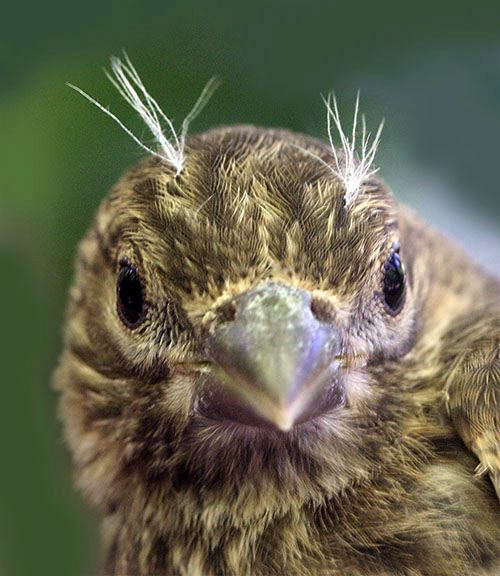|
|
|||
|
THIS WEEK at HILTON POND
12-21 December 2010 Installment #496---Visitor # (Back to Preceding Week; on to Next Week) |
|
SIGN UP FOR 2 OR MORE TRIPS; GET $100 OFF ON EACH Join fellow birders & educators as citizen scientists on 2011 Operation RubyThroat expeditions to observe, capture & band hummingbirds in Belize, Guatemala & Costa Rica. No experience necessary! |
|
SO WHAT'S UP WITH Back in the last century (1978-1982) we spent four very long, very cold, very dark winters in Minnesota studying behavioral ecology of Blue Jays. We also enjoyed watching other birds, including the big raptor migration at Hawk Ridge near Duluth and nesting Sandhill Cranes (below right) at Carlos Avery Wildlife Management Area.
All text, charts, tables & photos © Hilton Pond Center When our grad school days ended the family returned to York, South Carolina and a newly purchased 11-acre farm we christened Hilton Pond. As soon as we closed on the property in March 1982 (archival photo above) we erected giant feeders around the old farmhouse and stocked them with seed, anticipating an early summer move. The overloaded U-Haul van finally arrived in late June with mist nets and traps we deployed in short order in our eagerness to start banding birds at our new home/research site. On 28 June came the first capture--a female Common Grackle with a brood patch--and we were off and running with what has become the most comprehensive long-term bird banding study in the Carolinas.
All text, charts, tables & photos © Hilton Pond Center That first year we started slowly, capturing only 204 birds and 30 species from late June through December. On 11 November 1982, however, something of great interest occurred when we trapped a red and brown male House Finch (above); we ended up banding 265 of the species that first winter at Hilton Pond. We were a little familiar with House Finches--having observed several on a trip to southeastern Arizona the preceding year--but we'd never seen one in South Carolina prior to 1982. The reason: There just weren't that many of these birds in the Carolinas--or in Minnesota--in the early 1980s. Again one might ask, "So what's up with House Finches?"
All text, charts, tables & photos © Hilton Pond Center The House Finch, Carpodacus mexicanus (female above), is a North American species that is among the most common feeder birds across the U.S. Nonetheless, House Finches are NOT native to the Carolinas or to anywhere east of the Rockies. They ARE native to the Southwest, Pacific Coast states, and--as the species name implies--much of Mexico. "So what's up with House Finches?" in the Carolina Piedmont? House Finches are relatively calm and adaptable and can be kept as cage birds. The male's bright red plumage is pleasing to the eye, while the more sedately feathered female will build a nest (below right) and lay and hatch eggs in captivity--with both parents helping raise the young. In some parts of their western range House Finch populations do not migrate, while in others they show tendencies for altitudinal or latitudinal migration. Curiously, New York's newly released birds apparently had the migratory urge and began showing up in winter far away from their eastern point of origin. A wintering House Finch finally came as far south as Zebulon in Wake County NC in 1963, and the species was first observed in South Carolina at Greenville in December 1966. In addition to migrating, New York House Finches demonstrated dispersal, which means they departed their natal site and settled elsewhere--thus extending their breeding range. The first report of House Finches nesting in South Carolina was from Greenville in 1979, while York County's first record was from an active nest we found in Rock Hill in June 1988--although breeding was reported from neighboring Charlotte as early as 1975. Today the species breeds prolifically at Hilton Pond Center and on neighboring properties.
All text, charts, tables & photos © Hilton Pond Center Starting in New York it took House Finches about 35 years to extend their breeding range 550 miles to Charlotte on the North Carolina-South Carolina line. The species also dispersed to the west, taking almost 50 years to extend breeding 900 miles to the Wisconsin-Minnesota border. These north-to-south and east-to-west dispersals are remarkably similar--about 15-18 miles per year. Today the ranges of once-disjunct eastern and western House Finch populations overlap in the nation's heartland (see breeding map above), essentially eliminating the possibility two geographically separate species might arise. Again one asks: "So what's up with House Finches?"
All text, charts, tables & photos © Hilton Pond Center As noted above, we banded 265 House Finches during our first winter (1982-83) at Hilton Pond. The following year a HOFI irruption yielded 976 bandings in what may have been the southernmost large concentration for the species up to that time. As far as we know, virtually all those birds were migrants that departed come spring. In years since, our numbers of banded HOFI have fluctuated and things have become complicated when trying to determine whether winter birds are migrants or residents--especially after we started capturing local House Finch fledglings back in the summer of 1988. All text, charts, tables & photos © Hilton Pond Center (Click on chart above to open a larger version in a new browser window.) This is all of interest, but what really makes us ask "So what's up with House Finches?" is the noticeable reduction in "foreign encounters" for HOFI banded at Hilton Pond Center, i.e., how many have been found or recaptured elsewhere. Few birds of ANY species we've handled and released locally have been reported away from our banding station, but MANY individuals and species have returned to or stayed at Hilton Pond--providing a wealth of valuable knowledge about site fidelity and longevity. Our most common foreign encounters have been House Finches, of which 14 banded here have been found out-of-state. As shown on the chart above, of 265 HOFI banded during our first "winter" at Hilton Pond, three were reported elsewhere at some later date; a similar result occurred when three of the 976 birds banded in the banner year of 1983-84 were encountered later on. In addition, there were two single encounters of HOFI from 1989-90 and single birds in six other years--but NONE of the House Finches we've banded since 2001-02 have been reported outside York County. "So what's up with House Finches?"
All text, charts, tables & photos © Hilton Pond Center Our chart might be interpreted in a couple of different ways, and what most people might conclude is we've had only one foreign encounter since 1994-95 because not as many House Finches have been banded in recent seasons. Granted the red line and blue lines on the chart DO seem to undulate together, implying that a good year of banding is likely to yield one or more foreign encounters sometime down the line. This would seem to make sense in that our best year (976 HOFI in 1983-84) resulted in three encounters, and that five consecutive "good" banding years (1989-90 through 1993-94) each resulted in one foreign encounter. The logic fails, however, when we note there were three encounters from our second-lowest banding year (just 56 HOFI in 1984-85).
All text, charts, tables & photos © Hilton Pond Center Thus, we're more inclined to interpret the chart in a very different way, especially based on what we've already written about the history of House Finches in the eastern U.S. With only one of our banded HOFI showing up elsewhere from 1994 to the present, we speculate that House Finches from up north simply aren't migrating south over long distances at the same high rate they exhibited in the 1970s and 1980s. Even though our HOFI numbers are substantially lower than in peak years prior to 1994, odds are at least a few House Finches banded in the past 16 years would have been encountered by another bander or homeowner up north. In further support of this "diminished-long-distance-migration" hypothesis we offer the table below that lists all 14 Hilton Pond House Finches encountered elsewhere.
All text, charts, tables & photos © Hilton Pond Center If you're especially curious you may wish to study the table above at your leisure, but for now we'll point out a few things we find particularly interesting:
"So what's up with House Finches?"
All text, charts, tables & photos © Hilton Pond Center We're not sure what IS up with HOFI--all the more reason to continue our banding efforts at Hilton Pond Center. There's no doubt House Finches are permanently established in the Carolina Piedmont, where they annually produce large numbers of fledglings (above). The unknown is whether eastern populations of House Finches really ARE migrating shorter distances these days, or even if they've given up completely on migration. And if either scenario is true, does diminished migratory behavior among eastern House Finches have something to do some external factor, perhaps climate change? Please stay tuned to see if--after another 30 years of study at our Hilton Pond banding station--we have an answer to that burning question: "So what's up with House Finches?" All text, charts, tables & photos © Hilton Pond Center If you have a Twitter account and liked this page, you can recommend "This Week at Hilton Pond" to your followers by clicking on the Tweet button: Tweet Follow us on Twitter: @hiltonpond
|


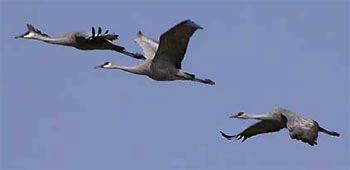 Like many folks, we maintained a backyard bird feeder that in winter attracted just what one might expect in the Twin Cities area--or even here in the Carolina Piedmont. At our feeders we hosted, among others, Purple Finches, Downy Woodpeckers, Dark-eyed Juncos, White-breasted Nuthatches, and Blue Jays. Never around Minneapolis, however, did we see a House Finch (HOFI). The reason: There were essentially none of them in Minnesota in the 1970s, which brings up our question for this week: "So what's up with House Finches?"
Like many folks, we maintained a backyard bird feeder that in winter attracted just what one might expect in the Twin Cities area--or even here in the Carolina Piedmont. At our feeders we hosted, among others, Purple Finches, Downy Woodpeckers, Dark-eyed Juncos, White-breasted Nuthatches, and Blue Jays. Never around Minneapolis, however, did we see a House Finch (HOFI). The reason: There were essentially none of them in Minnesota in the 1970s, which brings up our question for this week: "So what's up with House Finches?"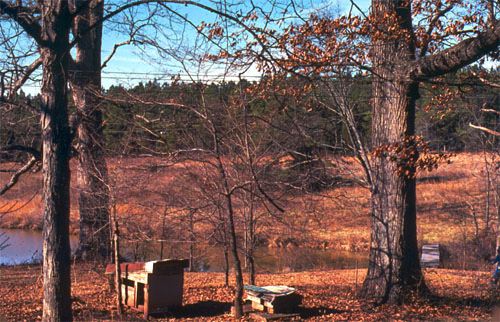
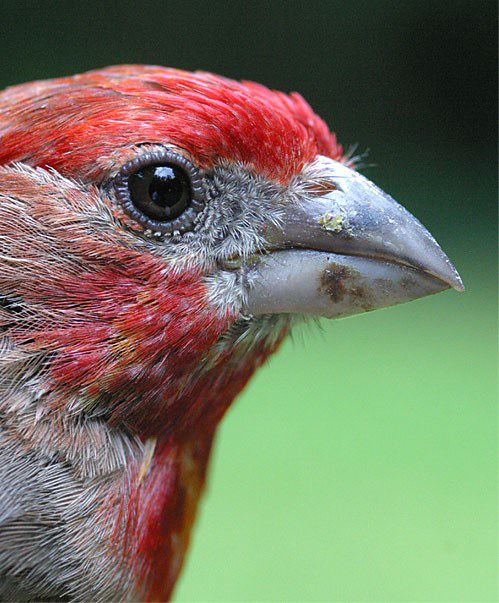
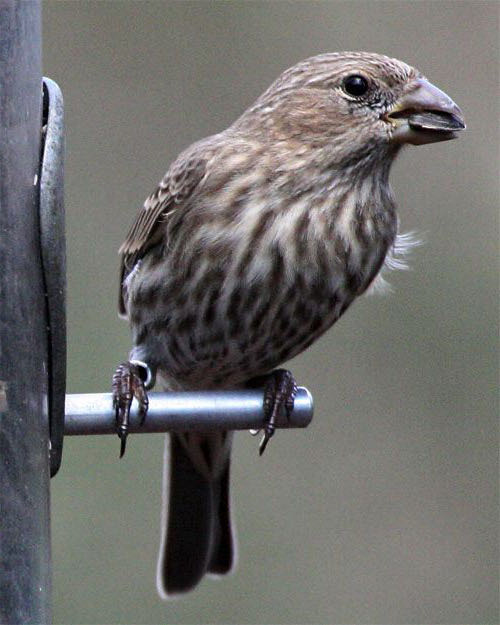
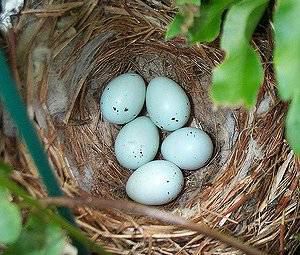 Because of this, in the early 1940s the species was sold in pet shops in New York City under the name "Hollywood Finches," alluding to the birds' "exotic" western origins. It's against federal law to possess or sell any native North American bird, of course, so law enforcement officers moved in on dealers in this illegal trade. Shop owners apparently got wind of the impending bust and over a couple of winters (1940-41) released several dozen House Finches on or around Long Island. Not surprisingly, these liberated birds survived and even started breeding; very soon there was a thriving population of House Finches in the Empire State.
Because of this, in the early 1940s the species was sold in pet shops in New York City under the name "Hollywood Finches," alluding to the birds' "exotic" western origins. It's against federal law to possess or sell any native North American bird, of course, so law enforcement officers moved in on dealers in this illegal trade. Shop owners apparently got wind of the impending bust and over a couple of winters (1940-41) released several dozen House Finches on or around Long Island. Not surprisingly, these liberated birds survived and even started breeding; very soon there was a thriving population of House Finches in the Empire State.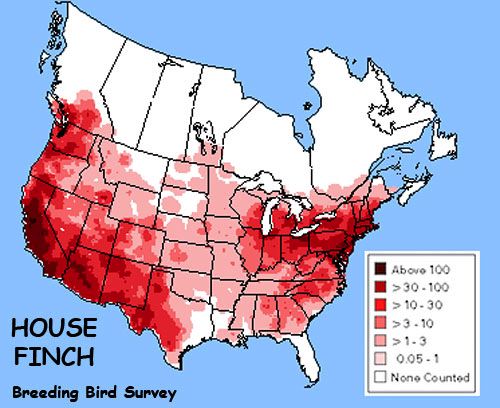
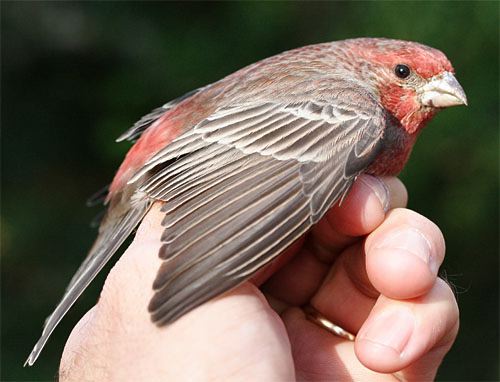
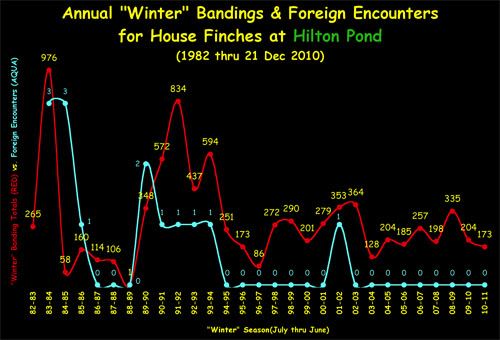
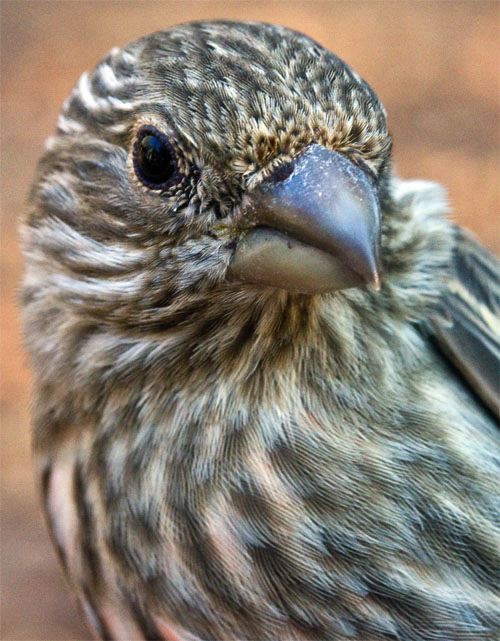
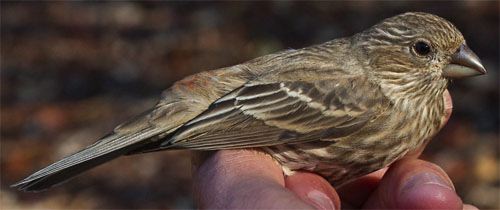
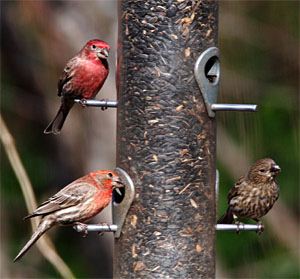 Of birds #2-8, some were encountered during the breeding season while others appeared at northern sites during winter--implying they could be facultative (i.e., non-obligatory) migrants that only come south in winters when natural food supplies are down.
Of birds #2-8, some were encountered during the breeding season while others appeared at northern sites during winter--implying they could be facultative (i.e., non-obligatory) migrants that only come south in winters when natural food supplies are down.
